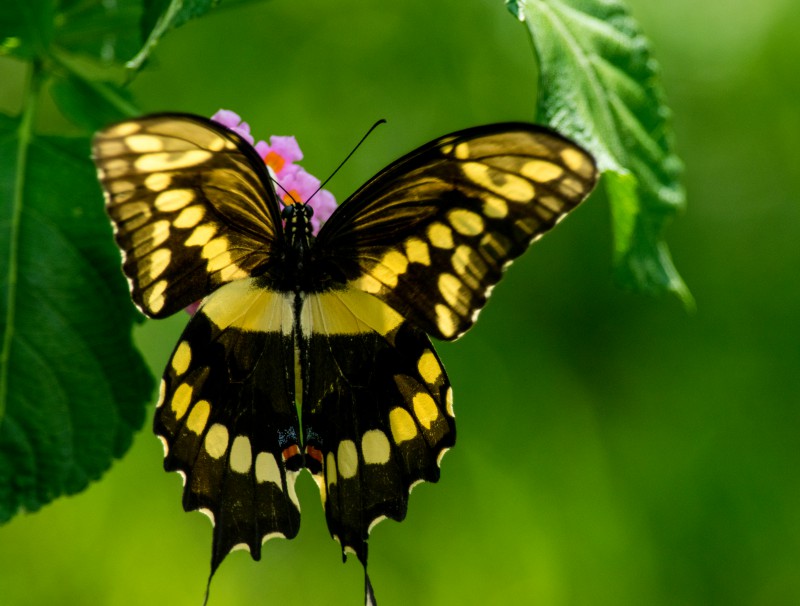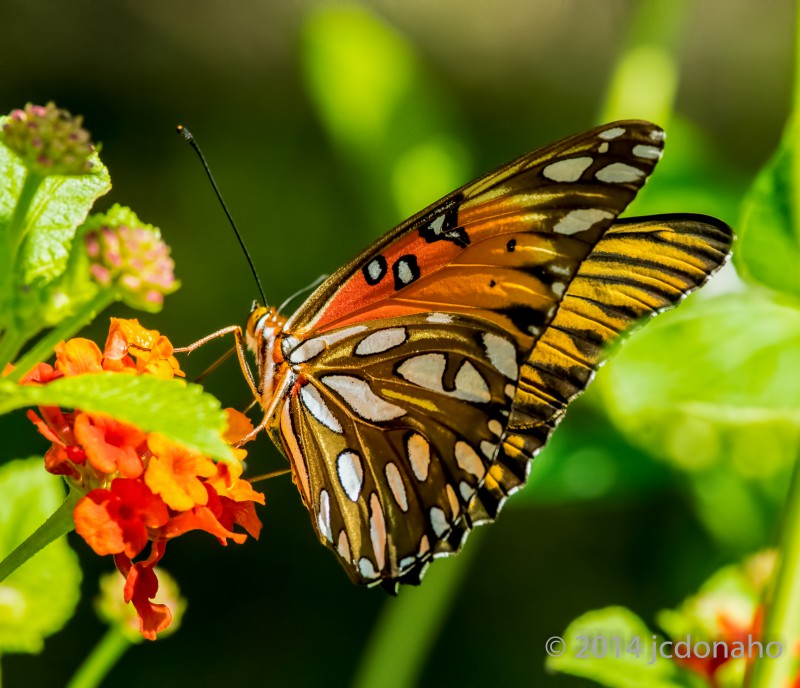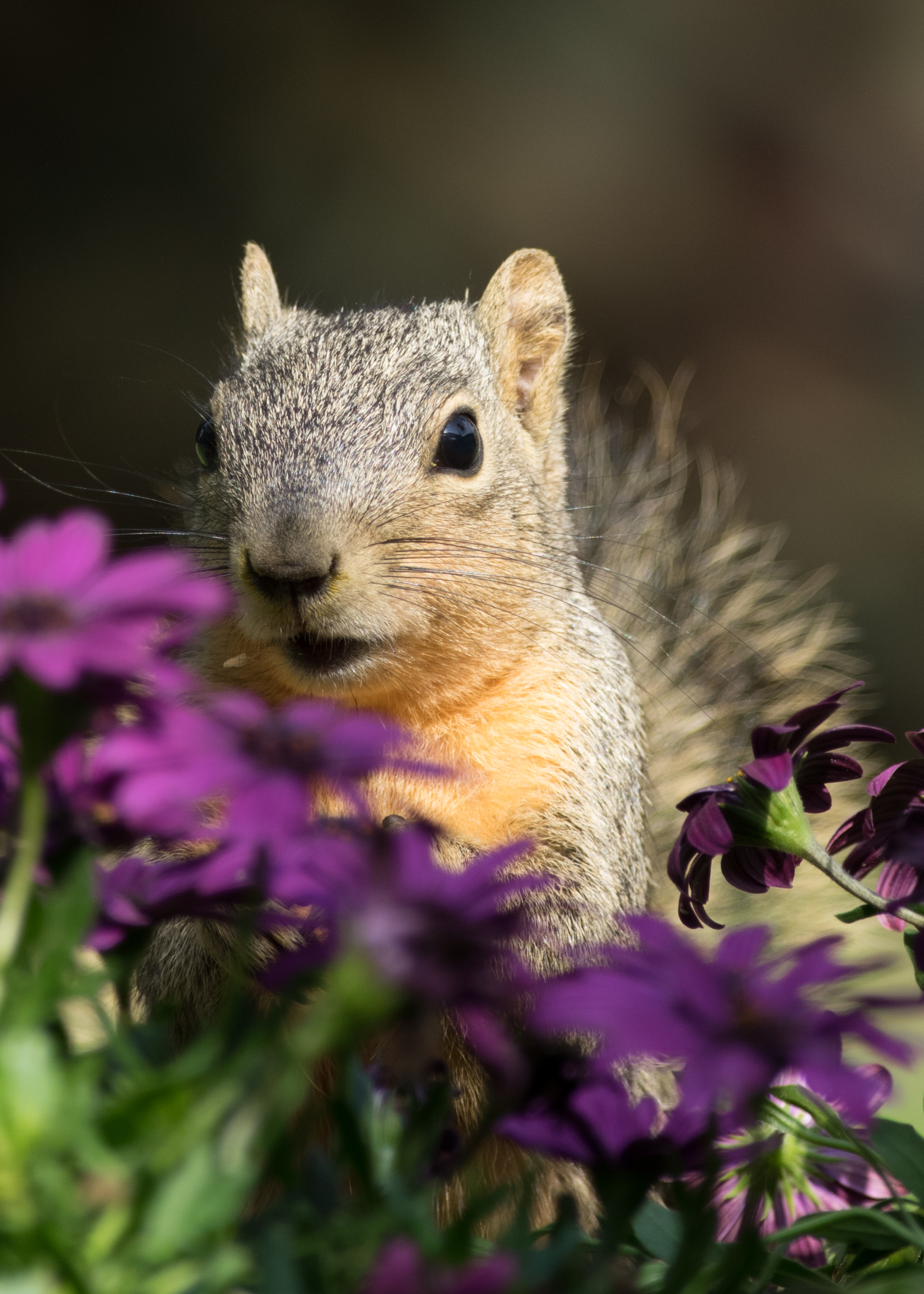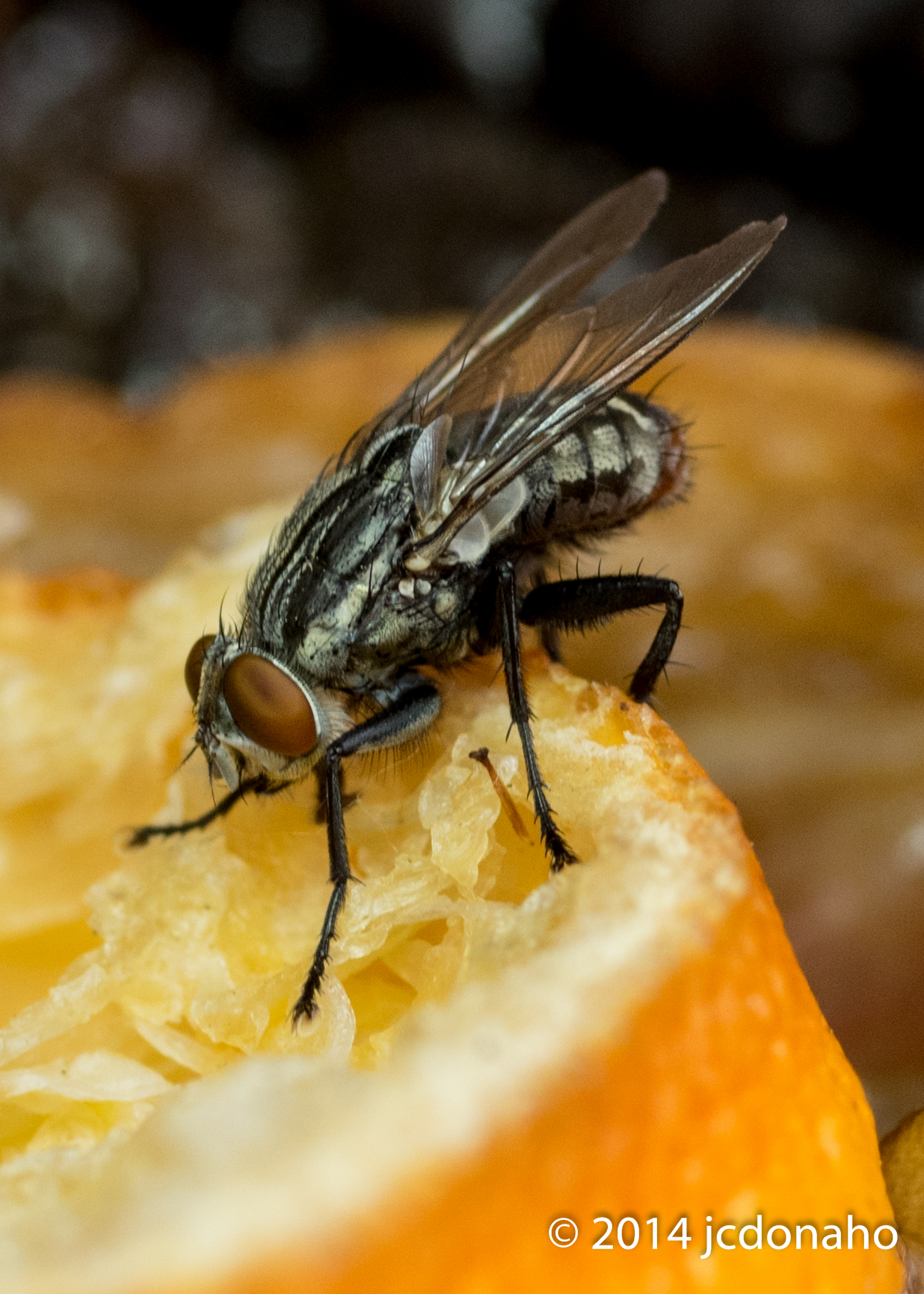Have you ever tried to watch a butterfly fly? It is very difficult to do. Even the swallowtail, one of the slowest fliers, still flaps its wings in a figure eight pattern five times a second. That’s 300 times a minute! Only by using photography and slow motion video are we able to watch what is really happening.
Flight is achieved via muscles connecting the wings to the thorax. The muscles are tiny yet they can propel some Monarch butterflies on a migration of over 3,000 miles! That is pretty amazing to me.
Look at the King Swallowtail Butterfly in the background of this photo. You can see that there are really two sets of wings, upper and lower, each capable of moving independently. That wing design gives the butterfly the ability to hover or change direction very quickly. The King Swallowtail in the foreground is at rest appearing only to have a single pair of wings. Researchers have found that butterflies in flight make hundreds of tiny wing adjustments each minute. They do this to compensate for wind currents and the turbulence their own wings create. They are complicated flying machines.
This ultra-slow motion video of butterfly flight reveals the figure eight pattern we can’t see in regular speed.
[youtube=http://youtu.be/6GiYfr0qIR4]
Our butterfly season is nearly over here in Texas. The Monarchs are still moving through on their migration, and we have a few Gulf Fritillaries and Swallowtails coming through.









